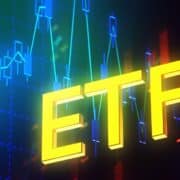Investors have several options to gain exposure to the entire US market, but the SPY Index and the Russel 1000 index are top of that list. The Russel 1000 exchange-traded fund is a subset of the Russel 3000 index and tracks the largest a thousand equities, by market capitalization, publicly traded in the United States.
Three primary ETFs track this index, exposing investors to upwards of 95% of the largest blue-chip companies trading in the US, but here we look at the Vanguard Russel 1000 ETF.
Why does it pay to invest in the Vanguard Russel 1000 ETF?
The VONE is a fund launched on 20th September 2010, ten years after the first fund was launched to track the Russel 1000 index, iShares Russel 1000 ETF.
This exchange-traded fund couples a thousand of the best, most profitable, and most liquid publicly traded equities in the United States and is sponsored by the Vanguard Group. The VONE ETF tracks the performance of the Russell 1000 Index through an indexing investment strategy, investing all of its net assets in equities that are included in its benchmark index in the same weight distribution as the composite index.
The composite index screens equities based on their liquidity, market capitalization, growth potential, and other desirable trading requirements to ensure the inclusion of the best 1000 stocks in the mega-cap and large-cap categories. In addition, this diversified fund is reconstituted annually, with quarterly rebalancing ensuring it stays true to its investment objective.
The result is a fund that offers investors:
- Diversification
- Savings
- Consistent Returns
- Reduced Risks
Portfolio diversification
The capital outlay needed to invest in 1000 of the best US blue-chip companies at even a single share per equity would be relatively high. In addition, knowing which of these 1000 firms would flourish in the post-pandemic era would be next to impossible.
However, through the Vanguard Russel 1000 ETF, investors gain exposure to 1000 of the best mega-cap, and large-cap equities, providing instant portfolio diversification. The 1000 firms might sound like a small number but compared to the SPY ETF, the VONE exposes investors to 98% of the US blue-chip companies while the SPY’s exposure is approximately only 80% of the same pool.
The underlying holdings are equities primarily over the $10 billion market capitalization threshold, providing stability and capital outlay to weather market downturns. Being a large-cap blend fund, the VONE ETF provides investors with value and growth attributes to their investment portfolios.
Savings
The allure of exchange-traded funds has always been their affordability compared to other investment assets. Brokers and other ETF providers are cashing in on this attribute to provide funds that even attract 0 commissions for index funds. The VONE ETF is one of the cheapest index funds around. While investors have to part with $15 for an annual investment of $10000 for the older IWB ETF, they only have to part with $8 for the VONE ETF for the same investment value over the same period.
Consistent returns
Since its inception in 201, investors in the ONE ETF have enjoyed average annual returns to the tune of 15.78%. An investor who put their money on the VONE ETF at launch, a $10000 investment, would now have an investment worth $41206, not accounting for an annual dividend yield of 1.18%. Not bad for investing and then sitting back and watching as your money works for you.
| Period | SPY | Category average | Segment average |
| 1 month return | -8.52% | -10.80% | -5.66% |
| 3 month return | -6.20% | -9.53% | -3.89% |
| YTD return | -9.25% | -11.33% | -6.35% |
| 1 year return | 11.75% | 5.00% | 7.67% |
| 3 year return | 70.88% | 44.98% | 21.71% |
| 5 year return | 104.64% | 52.52% | 21.93% |
A look at the table above shows that not only has VONE ETF provided investors with consistent returns on their investment, but it has also been outperforming both its category and segment averages.
Reduced risk
This large-blend ETF has a pretty even weight distribution except for the top four holdings that account for approximately 16% of the total weight. The result is a fund comprising 1029 equities with no concentration risk and a beta of 1.02.
Is there a downside to buying an S&P 500 ETF?
The only downside to the VONE ETF is that its holdings are already well-established organizations with limited legroom for growth. As a result, if seeking ETFs that will outperform the market, investors are better off with actively managed funds or those offering exposure to a combination of small-cap and mid-cap equities.
Final thoughts
The Vanguard Russel 1000 ETF is a fund representative of the US economic situation by concentrating on 1000 of the largest publicly traded equities. Its combination of large-cap and mega-cap equities, in addition to a larger holding base, offers investors more diversification than most large-blend funds mitigating against company-specific risk.
As such, the VONE ETF is in pole position to offer both growth and value to a portfolio in 2022 while providing the necessary diversification to weather any market volatilities.















Comments